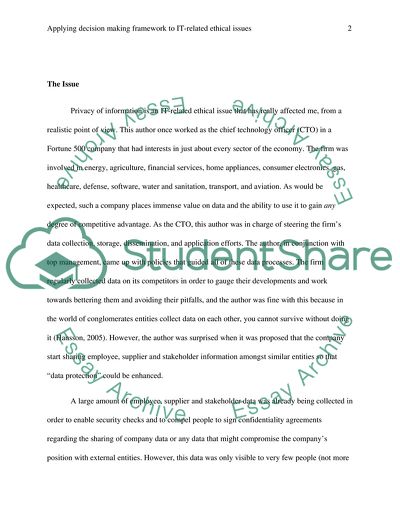Cite this document
(Applying Decision Making Framework to IT-Related Ethical Issues Report Example | Topics and Well Written Essays - 1500 words, n.d.)
Applying Decision Making Framework to IT-Related Ethical Issues Report Example | Topics and Well Written Essays - 1500 words. https://studentshare.org/information-technology/1816474-apply-decision-making-framework-to-it-related-ethical-issues
Applying Decision Making Framework to IT-Related Ethical Issues Report Example | Topics and Well Written Essays - 1500 words. https://studentshare.org/information-technology/1816474-apply-decision-making-framework-to-it-related-ethical-issues
(Applying Decision Making Framework to IT-Related Ethical Issues Report Example | Topics and Well Written Essays - 1500 Words)
Applying Decision Making Framework to IT-Related Ethical Issues Report Example | Topics and Well Written Essays - 1500 Words. https://studentshare.org/information-technology/1816474-apply-decision-making-framework-to-it-related-ethical-issues.
Applying Decision Making Framework to IT-Related Ethical Issues Report Example | Topics and Well Written Essays - 1500 Words. https://studentshare.org/information-technology/1816474-apply-decision-making-framework-to-it-related-ethical-issues.
“Applying Decision Making Framework to IT-Related Ethical Issues Report Example | Topics and Well Written Essays - 1500 Words”. https://studentshare.org/information-technology/1816474-apply-decision-making-framework-to-it-related-ethical-issues.


